Destinations
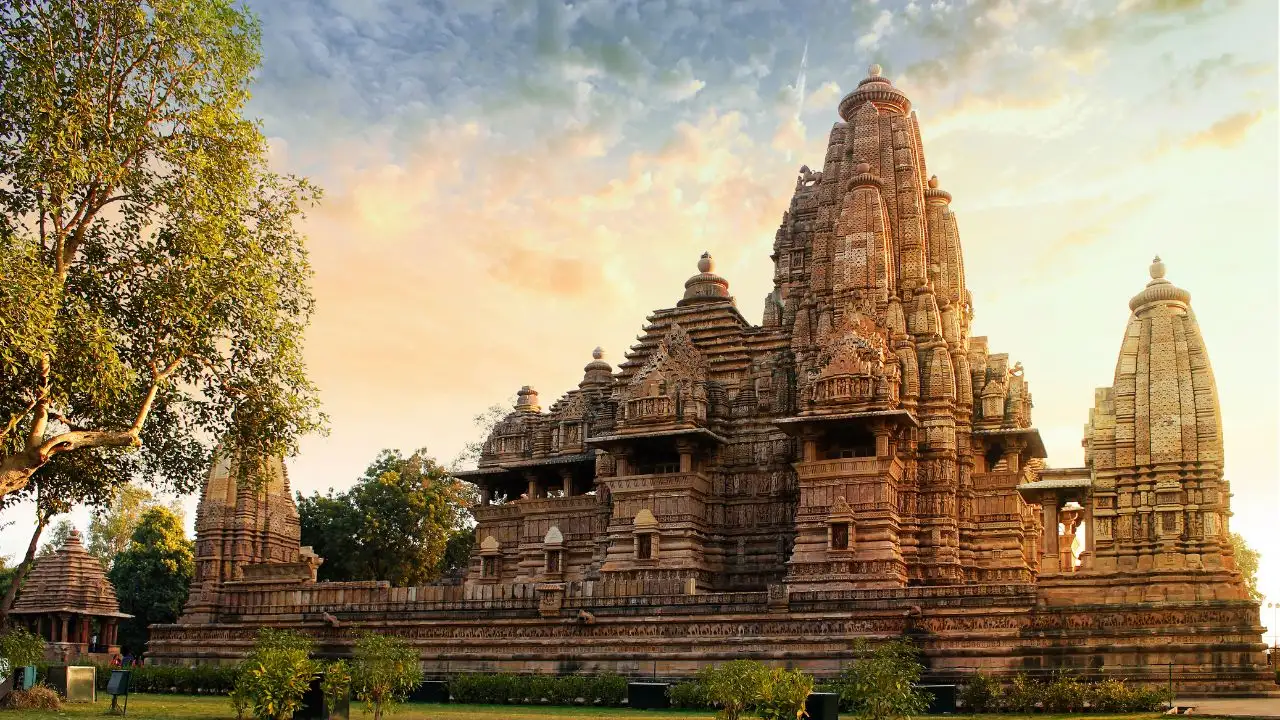
Khajuraho
Khajuraho, a UNESCO World Heritage Site located in Madhya Pradesh, is known around the world for its stunning temples adorned by erotic and sensuous carvings. A small town located in the Bundelkhand region, Khajuraho is a brilliant example of Indian architecture and its culture back in the medieval period. The architecture of these Hindu and Jain temples depict the erotic forms of love, the carvings on the walls display passion in the most sensuous yet aesthetic ways. Built between 950 to 1050 AD the sheer confrontational nature of these carvings shows a stark paradox with the conventional Indian ideals about eroticism, leaving everybody spellbound.

Bhedaghat
Bhedaghat is known for the Dhuandar Falls (Dhuan means smoke and Dhar means flow), a huge cascade of water that falls from a height of 98 feet. Boating in Bhedaghat especially during the moonlit night would surely make up for an unforgettable experience. The boatmen of these place are storytellers that will tell you about the place in the form of interesting stories.
Also regarded as the Marble Rocks of Bhedaghat, this small town has earned a reputation for the massive 100 ft rocks on either side of the Narmada. Bhedaghat is in close proximity of one of the major cities of Madhya Pradesh of JabalpurThe other notable attractions include 64 Yogini Temple and ‘Bandar Kudini’.
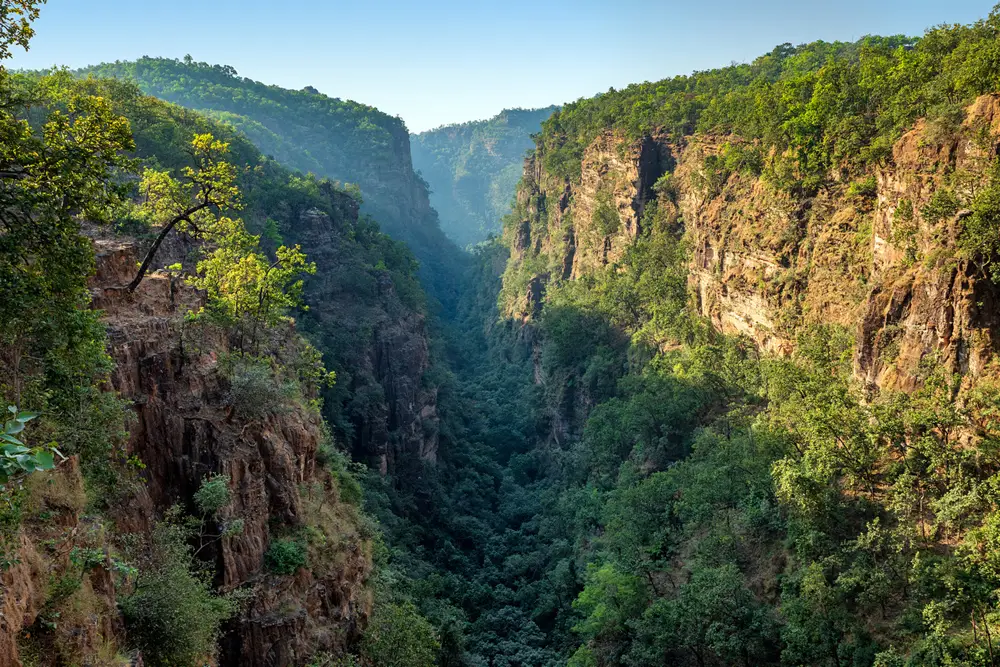
Pachmarhi
Pachmarhi is the only hill station and is the highest point in Madhya Pradesh. Pachmarhi is also often known as “Satpura ki Rani” or the “Queen of the Satpura Range”. Situated at an altitude of 1,067 metres, the picturesque town is a part of UNESCO Biosphere Reserve, home to leopards and bison.
Five sandstone cut caves on the hilltop are believed to be the spot where Pandavas stayed in Pachmarhi during their exile, making it a popular spot among religious tourists. Being at an elevated height and surrounded by bewitching forests of the Satpuras with the streams and waterfalls, Pachmarhi is a perfect weekend getaway from the nearby cities of Madhya Pradesh and Maharashtra.
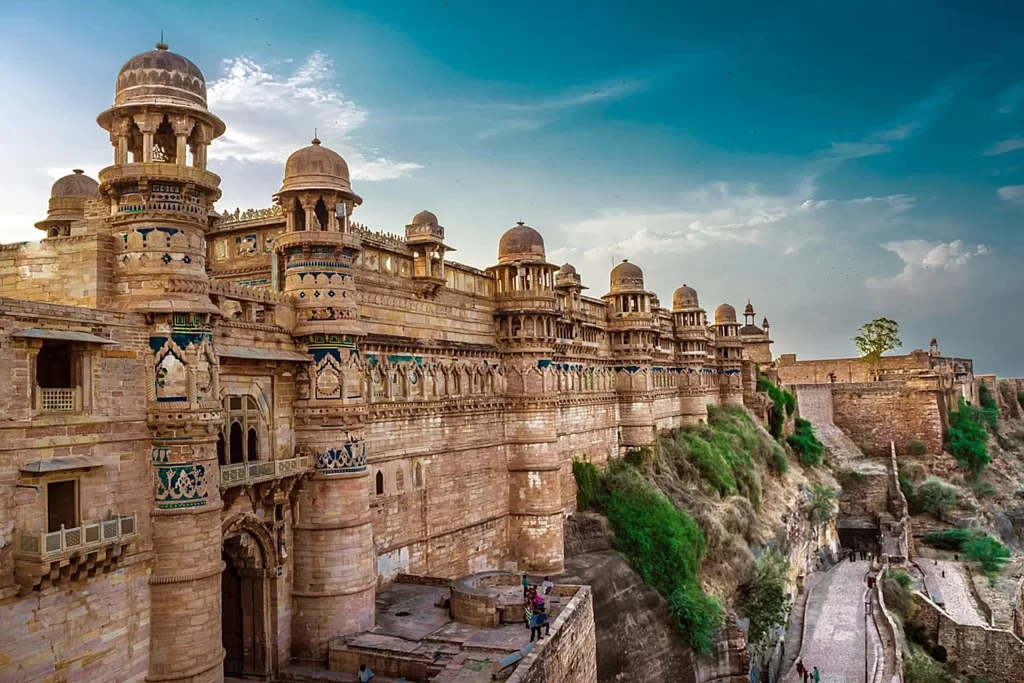
Gwalior
Gwalior is a historic city located in the state of Madhya Pradesh. Popular because of the hilltop fort, Gwalior is full of palaces and glorious temples giving this city a majestic charm which speaks volumes of its glorious past.
A historic city founded by king Surajesan, Gwalior is a city where India’s most eminent royalty once resided. Jai Vilas Pala has the largest carpet in the world which took almost 12 years to weave and two most massive chandeliers in the world that weight close to 3.5 tonnes. The great Indian musician Tansen was born in Gwalior, and the tomb of Tansen is also an important place here. Every year, in November/December, a four-day Tansen Music festival is celebrated in the city where various classical musicians from all over the country perform on the stage near the tomb itself.
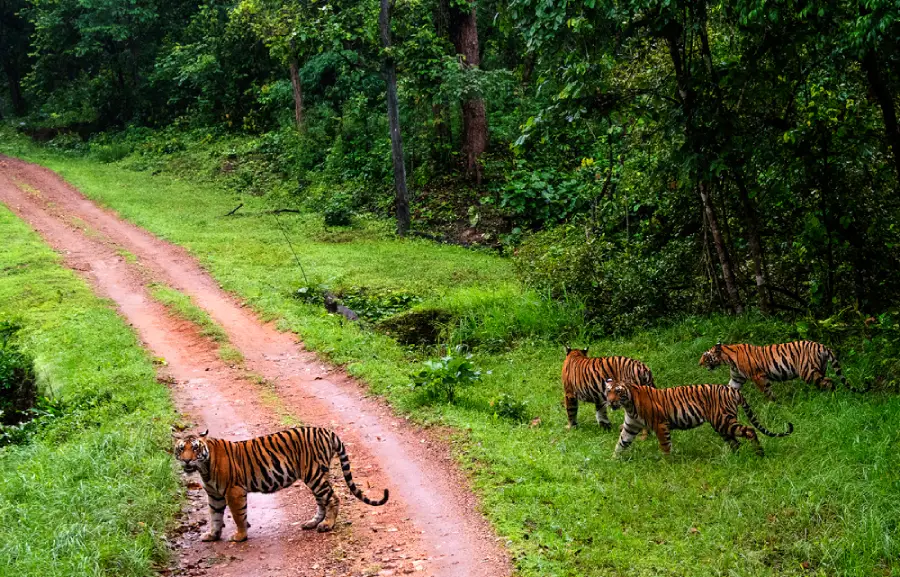
Kanha National Park
Located in a central region of Madhya Pradesh, Kanha National Park is the largest National Park in central India and has been ranked as one of the best parks in Asia. Among the 22 species of large mammals, the royal Bengal tigers are one of the major attractions. One of the best tiger reserves in India, the present-day area stretches over the 940-kilometre square which is divided into two sanctuaries: Hallon and Banjar.
The park was established in the year 1955 and has since actively contributed to the preservation of many endangered species. The National Park was taken under the Project Tiger Reserve in 1974. Abundant in flora and fauna, the Kanha National Park houses one of the rarest species of deer- the Barasingha.
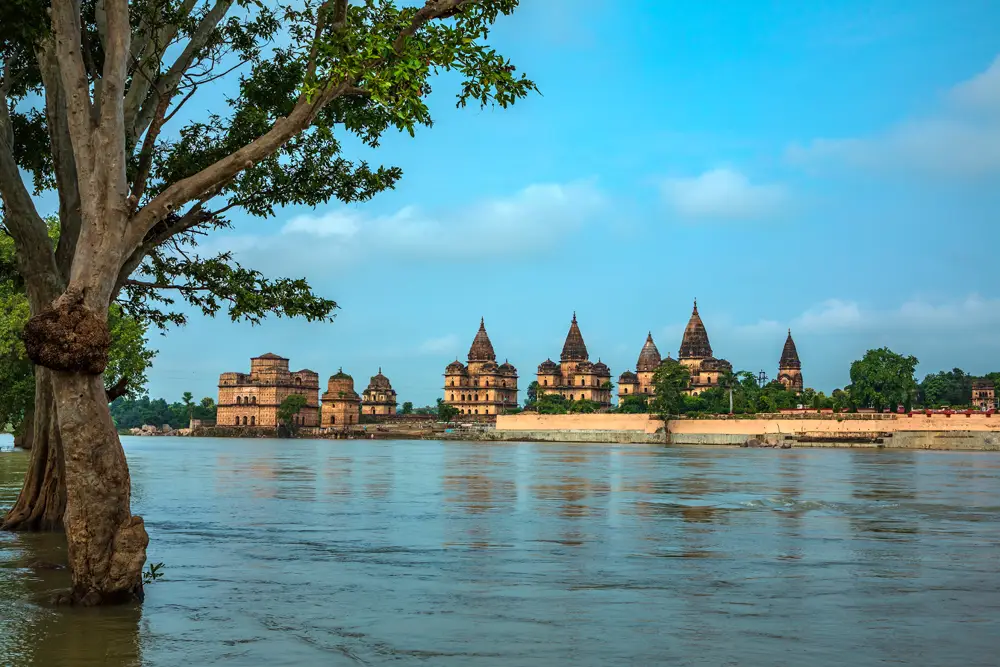
Orchha
Orchha is a historical town located on the banks of river Betwa in Madhya Pradesh, known for its grand palaces, and intricately carved temples. Famously known as the city of palaces, it is world-renowned for the classic mural paintings, frescos and Chhatris (cenotaphs) that were constructed to commemorate the Bundela rulers. Orchha’s old-world charm casts a spell on tourists from all around the world.
Founded in 1501 by Bundela Rajput Chief, Orchha literally means ‘a hidden place’. It was the capital of one of the most powerful dynasties to ever rule in India- the Bundelas. The major attractions in Orchha include Ram Raja Temple (the only place where Lord Ram is worshipped both as a God and a king), Laxmi Narayan Temple (known for its unique architecture which is a melange of a fort and a temple), and the Jahangir Mahal (built in hour of Mughal emperor Jahangir).

Omkareshwar
Stradling the confluence of the rivers Narmada and Kaveri, the holy city of Omkareshwar houses one of the 12 revered Jyotirlingas. Shaped in the form of Hindu religious symbol ‘Om’, due to the merging of two valleys and a central pool of Narmada waters, it derives its name from ‘Omkara’ which is just one other name of Lord Shiva. It has two ancient shrines- Omkareshwar and Amarkareshwar. The sacred town also boasts of architectural wonders and scenic beauty, in addition to the pilgrim sites.
The town of Omkareshwar consists of two ancient shrines- one is Omkareshwar and the other is Amarkareshwar. The holy town is situated on the meeting point of two rivers- Narmada and Kaveri. This meeting between two of the most prominent rivers of India leaves the island in the shape of Hindu symbol Om which is one of the most revered symbols by Hindus.
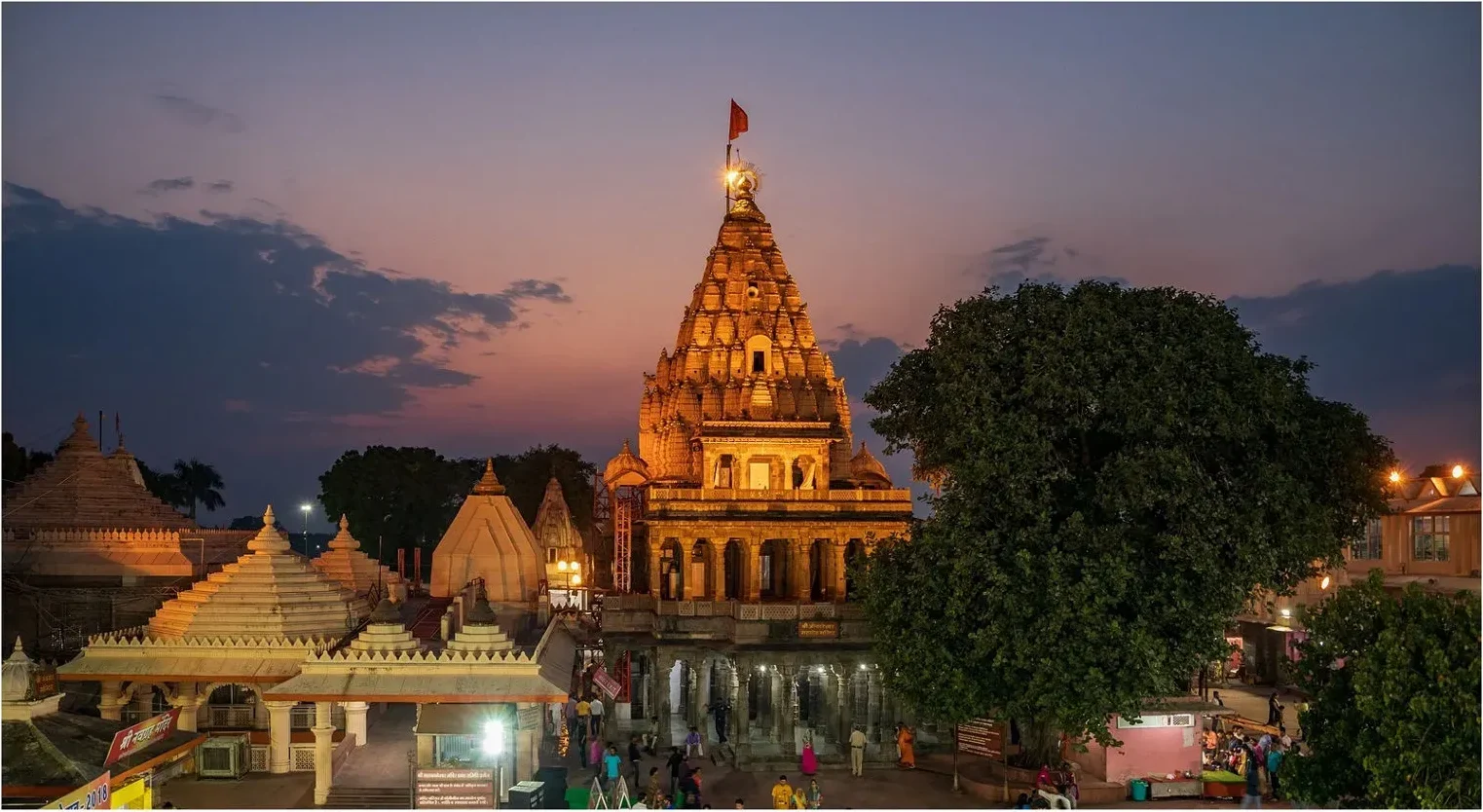
Ujjain
Ujjain, considered to be one of the holiest cities of India, is an ancient city situated on the eastern bank of the Shipra River in the Malwa region of Madhya Pradesh. Ujjain is one of the four sites for the Kumbh Mela, the largest peace-time gathering on the planet that attracts 100 million people to the festival.
This makes Ujjain an important place of Hindu Pilgrimage. To add to that, it is also home to the Mahakaleshwar Jyotirlinga, one of the twelve Jyotirlinga shrines to the god Shiva. Ujjain is one of the most glorious cities of ancient India as it was also known to be the educational hub of various Indian scholars. The immense wealth of Ujjain in terms of religion, architecture, and educational value makes this is a top attraction amongst not only Indian travellers but also amongst foreign tourists as well. Ujjain is located at a distance of 52 km from Indore, which is also the nearest major airport.
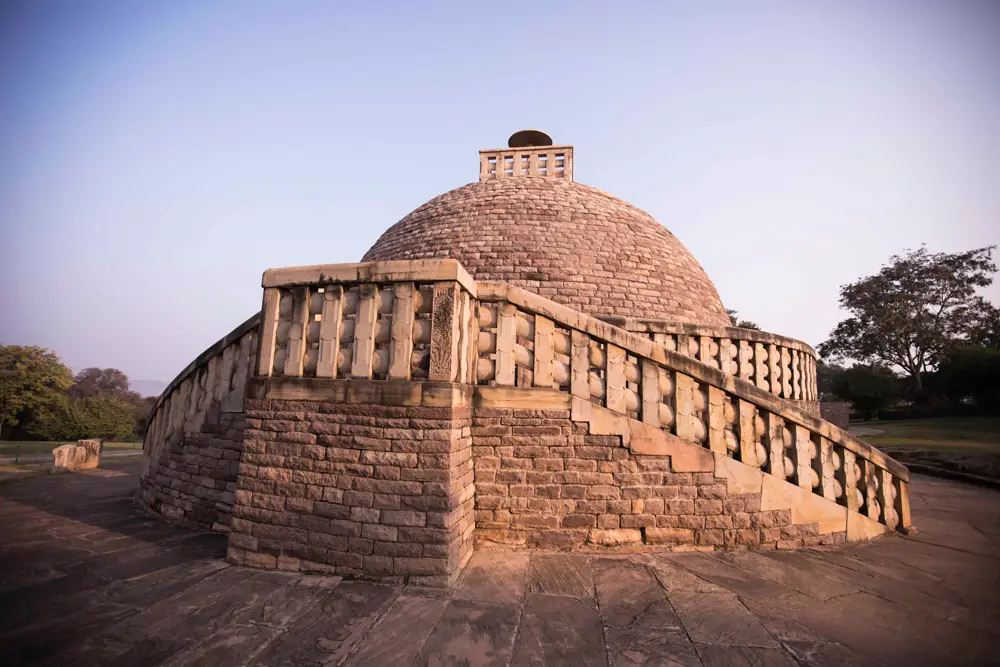
Sanchi
Located in Madhya Pradesh, the Buddhist monuments of Sanchi are one of the oldest stone structures in India. Designated a World Heritage site by UNESCO, the Great Stupa was installed in the 3rd century BC by Emperor Ashoka of the Mauryan dynasty. The sculptures and monuments present at the site are a fine example of the development of Buddhist art and architecture in Madhya Pradesh. The stupa sits atop a hill in Sanchi, 46 km from the city of Bhopal.
This large hemispherical dome, more than 50 ft high with a diameter of more than 30m was constructed to honour Lord Buddha and houses many important Buddhist relics. It is meant to serve as a sacred burial mound for the distributed remains of Lord Buddha.